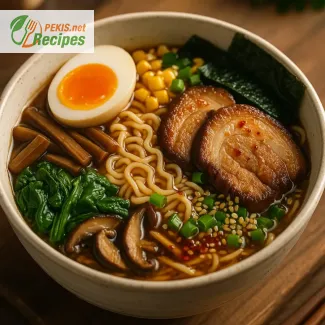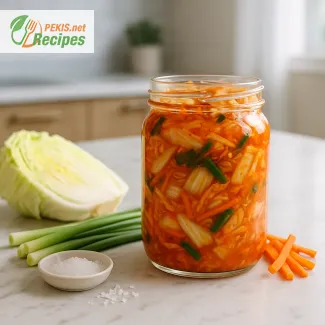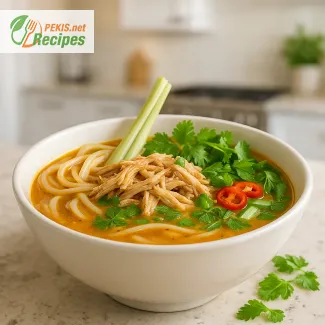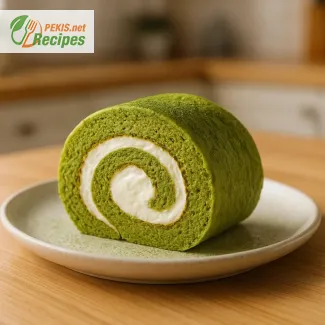
Elevate Your Ramen Game with These Flavorful Topping Combinations
Discover the most delicious and creative ways to enhance your homemade noodle soup
There’s something deeply satisfying about a warm bowl of homemade ramen — the slurp of noodles, the umami-packed broth, and most importantly, the toppings that bring everything together. While the broth and noodles lay the foundation, it’s the toppings that truly define the character of your dish. Whether you're crafting a traditional shoyu ramen or experimenting with fusion flavors, knowing the best toppings can take your meal from good to unforgettable.
Home cooks around the world are moving beyond simple garnishes and embracing a diverse array of ramen toppings that add depth, texture, and visual appeal. From crispy garlic chips to slow-cooked pork belly, each element plays a role in transforming your bowl into a restaurant-quality experience.
The essential role of toppings in a balanced bowl of ramen
Ramen isn’t just one dish—it’s a canvas for culinary expression. The toppings you choose influence not only the flavor but also the texture, richness, and complexity of the final dish. A well-composed bowl combines creamy, crunchy, savory, and spicy components to create a harmonious eating experience.
Most classic ramen bowls include a base of broth, noodles, and two to four toppings. But the variety doesn’t end there. You can customize your bowl to match your dietary preferences, cultural inspirations, or seasonal ingredients. From protein-rich options like soft-boiled eggs and grilled chicken, to plant-based additions like tofu, corn, and fermented vegetables, the possibilities are almost endless.
Traditional ramen toppings worth mastering
Chashu (braised pork belly)
This melt-in-your-mouth pork belly is slow-cooked in a sweet and savory soy-based sauce until it becomes ultra tender. It’s often served in thin slices and placed gently atop the noodles. The rich flavor and silky texture of chashu elevate any ramen bowl to a comforting, indulgent treat.
Ajitsuke tamago (marinated soft-boiled egg)
Also known simply as ramen egg, this topping is a staple in most ramen varieties. With a perfectly jammy yolk and a soy-based marinade that infuses the white with umami, it's both flavorful and visually appealing. It's a must-have in any homemade ramen recipe.
Menma (fermented bamboo shoots)
These slightly chewy, umami-packed bamboo shoots offer a pleasant contrast to the softness of the noodles and richness of the broth. Their fermented flavor adds depth and authenticity to your bowl.
Nori (seaweed sheets)
Often used as a decorative element, nori also provides a subtle sea-salt note that enhances the broth. Folded or shredded, it's an easy way to add complexity and aroma to your ramen.
Modern toppings that bring boldness and creativity
Crispy garlic and fried shallots
A sprinkle of golden, crunchy fried garlic or shallots introduces a burst of savory flavor and satisfying texture. These toppings are especially popular in Southeast Asian–inspired ramen and can be made at home in minutes.
Corn and butter
A Hokkaido classic, sweet corn and a pat of butter bring richness and a hint of sweetness that works beautifully in miso-based broths. The butter melts into the soup, adding a silky mouthfeel without overpowering the other flavors.
Spicy chili oil and sesame seeds
If you’re looking for heat and nuttiness, a drizzle of homemade chili oil and a sprinkle of toasted sesame seeds can instantly transform your ramen. This combo is popular with tantanmen-style or spicy miso ramen.
Kimchi and pickled vegetables
Fermented toppings like kimchi, pickled ginger, or daikon radish add a sharp, acidic note that balances the heaviness of the broth. They also provide a delightful crunch and visual contrast.
Vegetarian and vegan-friendly ramen topping ideas
With more home cooks embracing plant-based diets, the demand for vegan ramen toppings is on the rise. Fortunately, there’s no shortage of flavorful, meat-free ingredients to work with.
Try topping your bowl with:
- Grilled tofu slices or tofu puffs for protein
- Miso-glazed eggplant for richness
- Enoki or shiitake mushrooms for umami
- Baby spinach, bok choy, or bean sprouts for freshness
- Avocado slices for creaminess
- Toasted nori, chili crisp, or black garlic oil for depth
These ingredients can turn any noodle soup into a hearty and satisfying meal, without sacrificing complexity or richness.
Pro tips for building the perfect ramen bowl
When adding toppings, think in layers. Start by considering contrasting textures: pair something soft (like marinated eggs) with something crisp (like fried shallots). Add something fermented or tangy to cut through the richness, and always finish with a fresh element—like scallions, herbs, or microgreens.
Don’t be afraid to mix cultures either. A hint of Mexican pickled jalapeños, Mediterranean olives, or Thai lime leaves can personalize your ramen and make it uniquely yours. The key is balance, not excess.
By experimenting with the right mix of traditional and contemporary ramen toppings, you can create an unforgettable dining experience in your own kitchen. From hearty meat options to vibrant veggies, it all starts with quality ingredients and a thoughtful composition.
1. Prepare the broth base:
In a large pot, combine chicken broth, soy sauce, mirin, sesame oil, grated ginger, minced garlic, and brown sugar. Bring to a gentle simmer over medium heat. Let it simmer uncovered for 20–25 minutes to allow flavors to combine.
2. Boil the eggs:
Bring a pot of water to a boil. Gently lower in the eggs and boil for 6–7 minutes. Transfer to an ice bath immediately to stop the cooking process. Peel once cooled. For marinated eggs (ajitsuke tamago), soak peeled eggs in a mixture of soy sauce, mirin, and water (1:1:1) for at least 4 hours or overnight.
3. Cook the noodles:
Boil ramen noodles according to package instructions (typically 4–5 minutes). Drain and rinse briefly with hot water to remove excess starch.
4. Prepare toppings:
While the broth is simmering and noodles cooking, prepare the toppings:
- Slice chashu pork belly (use pre-prepared or pan-seared slices).
- Heat corn kernels and bamboo shoots in a separate pan or microwave.
- Wash and blanch spinach briefly (30 seconds in hot water).
- Clean and sauté mushrooms if using fresh.
- Cut nori sheets into strips.
- Slice green onions finely.
5. Assemble the ramen bowls:
Divide the cooked noodles evenly into 4 bowls. Pour hot broth over each.
Top each bowl with:
- 2 slices of chashu pork belly
- 1 soft-boiled egg, halved
- Spoonfuls of corn, bamboo shoots, and mushrooms
- Handful of blanched spinach
- A sprinkle of green onions and toasted sesame seeds
- Strips of nori
- A drizzle of chili oil if desired
Serve immediately while hot.
Transform Your Classic Ramen: Flavor Boosts and Smart Tweaks
Practical tips to upgrade your homemade noodle soup and avoid common mistakes
A bowl of homemade ramen offers comfort, creativity, and a touch of culinary artistry. But even a well-made traditional version leaves room for personalization, improvement, and a more balanced flavor profile. Whether you're aiming for deeper umami, a healthier composition, or restaurant-style precision, small changes can elevate your noodle soup to something truly exceptional. Here's how you can make your ramen not just good, but unforgettable.
Choose the right broth base for maximum impact
The broth is the soul of any ramen bowl. While chicken broth provides a clean and accessible flavor, switching to homemade bone broth—from pork, beef, or even a roasted chicken carcass—infuses the soup with collagen, richness, and body. If you're aiming for vegetarian ramen, opt for a deep mushroom or kombu-based dashi, and finish it with a touch of miso or soy milk for creaminess.
For enhanced depth, simmer your broth longer and layer umami-rich ingredients like dried shiitake mushrooms, kombu, anchovies, or a few drops of fish sauce. These additions contribute to the savory backbone of the dish without overpowering it.
Elevate your tare: the secret flavor enhancer
Many home cooks overlook the role of tare—the seasoning base added to ramen broth. A concentrated blend of soy sauce, mirin, and sake makes a classic shoyu tare, but you can modify it based on your desired flavor direction.
For extra complexity, infuse your tare with roasted garlic, charred green onions, or even a spoonful of black garlic paste. These additions will deepen the flavor and bring out hidden dimensions in the broth.
Balance the toppings with intention
An unbalanced bowl often feels overwhelming or bland. A good ramen topping layout should follow the principle of contrast and harmony. Combine rich and fatty toppings like chashu pork or soft-boiled egg with fresh or acidic elements like spinach, pickled ginger, or lightly fermented vegetables. This prevents palate fatigue and allows each bite to feel different and interesting.
To make your ramen more nourishing, swap some of the traditional toppings for vegetable-forward options. Grilled zucchini, roasted sweet potatoes, or marinated tofu can provide texture, color, and nutrition without sacrificing satisfaction.
Homemade vs. store-bought: why fresh makes a difference
While instant noodles and pre-made sauces are convenient, making ramen from scratch significantly improves texture and taste. Freshly cooked noodles offer better elasticity and bite, while a simmered homemade broth avoids the excess sodium and artificial flavorings found in commercial alternatives.
Homemade ramen also gives you full control over salt levels, spice balance, and portion size, letting you adapt the recipe to your personal health goals. Plus, the satisfaction of building your bowl from the ground up creates a deeper connection to the meal.
Avoid these common mistakes when making ramen
Overcooking the noodles
Boiling noodles too long causes them to lose their spring and soak up too much broth, which dilutes the final taste. Always follow the package time and test for doneness just before draining.
Using low-quality broth
A weak or watery broth will make the entire bowl taste flat. If you're short on time, enhance store-bought broth with umami boosters like kombu, miso, or dried mushrooms.
Overloading with toppings
While it's tempting to add everything, too many toppings can overwhelm the flavor structure. Focus on three to five well-chosen elements that complement each other.
Skipping the finishing oil
A finishing drizzle of chili oil, garlic oil, or sesame oil adds fragrance and sheen. Skipping it can make even a flavorful broth feel incomplete.
Healthier adaptations for a lighter bowl
If you're watching your fat or sodium intake, opt for a lighter broth (like vegetable or kombu dashi), reduce the amount of added soy sauce, and avoid cured meats. Replace pork belly with grilled chicken or steamed tofu.
Noodles can also be swapped for whole wheat ramen, rice noodles, or low-carb alternatives such as spiralized zucchini. Boost fiber with extra leafy greens or bean sprouts, and enhance digestion with fermented add-ons like kimchi or pickled daikon.
Add complexity through texture and temperature play
Ramen isn’t just about flavor—it’s also about texture and temperature. A contrast of hot broth with chilled toppings (like cold egg halves or pickled vegetables) stimulates the palate. Similarly, adding crunchy elements such as crispy onions, toasted seeds, or fried garlic introduces a tactile dimension that keeps the dish exciting.
You can also experiment with garnish timing. Add herbs like shiso or Thai basil just before serving to preserve their aroma, or let ingredients like bamboo shoots gently warm in the broth to release more of their character.
Experiment with fusion toppings for modern flair
Modern ramen encourages creativity. A sprinkle of furikake, a dollop of sriracha mayo, or even a few pieces of tempura shrimp can add bold new layers of taste. Fusion ingredients like smoked salmon, soft cheese, or crispy tofu skin allow you to explore new regional interpretations while keeping the core ramen identity intact.
Above all, ramen rewards experimentation. By understanding the function of each component and adjusting ingredients thoughtfully, you can craft a bowl that reflects your taste and elevates your skills as a cook.
Allergens present in the recipe:
- Gluten (ramen noodles, soy sauce)
- Eggs (soft-boiled eggs)
- Soy (soy sauce, miso if used)
- Sesame (oil and seeds)
Substitution tips to remove allergens and gluten:
- Replace ramen noodles with gluten-free rice noodles or buckwheat soba
- Use tamari or coconut aminos instead of soy sauce
- Skip the eggs or use tofu slices as a topping
- Omit sesame seeds and oil; replace with olive oil or neutral oil
Vitamins and minerals per serving (approximate):
- Vitamin A – 280 µg: supports vision and immunity
- Vitamin C – 18 mg: contributes to collagen synthesis and immune defense
- Iron – 3.2 mg: supports oxygen transport in blood
- Calcium – 75 mg: essential for bones and nerve signaling
- Magnesium – 42 mg: supports muscle and nerve function
- Potassium – 610 mg: helps regulate blood pressure
- Folate – 75 µg: important for cell regeneration and pregnancy support
- Vitamin B12 – 1.5 µg: supports nerve health and red blood cell production
Antioxidants per serving (approximate):
- Selenium – 18 µg: helps protect cells from oxidative stress
- Beta-carotene – 2400 µg: converted into vitamin A, supports skin and eyes
- Lutein & Zeaxanthin – 650 µg: beneficial for eye health
- Allicin (from garlic) – active dose present: natural antimicrobial and heart health support
- Polyphenols (from green onions and sesame) – moderate: anti-inflammatory benefits





